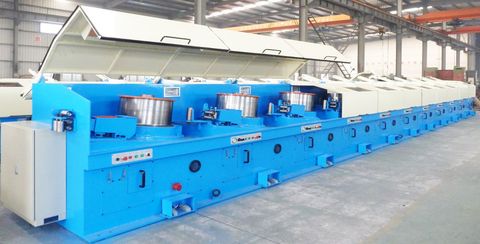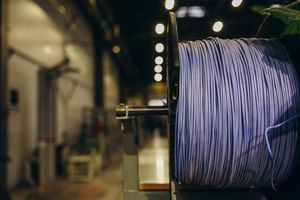A Helpful Overview of Coating Machine Types and Applications
Coating machines are industrial devices designed to apply a uniform layer of material onto a surface. This material can be paint, adhesive, protective film, ink, polymer, powder, or any specialized coating required for a product. These machines exist because many industries need protective or functional layers on their products, whether for durability, appearance, insulation, corrosion resistance, or improved performance.
The concept of coating has been present for centuries, but modern coating machines evolved to achieve consistency, efficiency, and precision. Manual coating methods often result in uneven layers, higher wastage, and slower production. In contrast, coating machines offer stable quality, uniform thickness, and faster output, making them essential in manufacturing, packaging, printing, automotive, electronics, pharmaceuticals, and textile sectors.

Coating machines vary widely depending on the material used, the industry, and the desired outcome. Some are designed for delicate surfaces like pharmaceutical tablets, while others handle larger surfaces such as metal sheets, films, paper, or wooden products.
Importance – Why Coating Machines Matter Today
Coating machines play a crucial role across multiple industries because they solve various modern manufacturing challenges. Their importance has grown as industries demand higher quality standards, sustainable materials, and faster production cycles.
Ensures consistent quality
Coating machines apply layers with precise thickness, helping maintain product uniformity. This reduces defects and enhances reliability across batches.
Improves durability and protection
Protective coatings reduce wear, corrosion, moisture damage, UV exposure, and heat impact. This is essential for metals, electronics, automotive parts, and packaging materials.
Enhances product functionality
Coatings can add useful characteristics, such as:
-
Anti-scratch resistance
-
Heat insulation
-
Water resistance
-
Anti-corrosion properties
-
Improved electrical conductivity
Supports large-scale production
Coating machines significantly increase production speed compared to manual methods. This helps industries meet growing consumer demand efficiently.
Reduces material waste
Machines help control the amount of coating applied, ensuring minimal overspray or excess usage.
Beneficial across many industries
Coating machines are important for:
-
Printing and packaging
-
Automotive finishing
-
Wood and furniture coating
-
Electronics and PCB coating
-
Pharmaceuticals (tablet coating)
-
Textiles and fabrics
-
Construction materials
Their ability to support accuracy, speed, and quality makes them highly relevant today.
Recent Updates – Trends and Developments in Coating Machines
The past year has seen several advancements in coating technologies, influenced by sustainability goals, automation, and evolving manufacturing needs.
Rise of environmentally friendly coatings (2024–2025)
Industries are shifting to low-VOC and water-based coatings due to environmental laws and consumer awareness. Coating machines are being redesigned to support these eco-friendly materials.
Greater use of automation
Automated coating systems with sensors, PLC controls, and robotics saw strong adoption during 2024. These systems ensure:
-
More precise coating thickness
-
Reduced human involvement
-
Improved safety
-
Lower operational errors
Development of smart coating machines
Smart coating systems with IoT features can monitor coating patterns, predict maintenance needs, and track material consumption. This gained traction in industries such as automotive and electronics.
Growth of UV and IR curing technology
UV-curable coatings and IR drying systems have become more common, offering:
-
Faster drying times
-
Lower energy consumption
-
Better finish quality
Improved coating methods for electronics
With increasing demand for compact electronics, conformal coating equipment is improving to handle micro-components and sensitive circuits.
Powder coating advancements
Powder coating technologies improved to support faster recycling of overspray and higher transfer efficiency.
These updates reflect a shift toward cleaner, smarter, and more efficient coating solutions.
Laws or Policies – Regulations Affecting Coating Machines
Coating machines themselves are not heavily regulated, but the coatings used and industries they serve follow several regulatory guidelines.
Environmental regulations
Countries enforce strict rules on chemical emissions and solvents used in coatings. Regulations often cover:
-
VOC (Volatile Organic Compounds) limits
-
Emission controls
-
Safe disposal of waste materials
These policies encourage industries to shift to water-based and eco-friendly coatings.
Occupational safety guidelines
Workers operating coating machines must follow safety standards such as:
-
Proper ventilation requirements
-
Personal protective equipment (PPE)
-
Machine safety protocols
-
Chemical handling guidelines
Industry-specific regulations
Coating applications differ by sector and are regulated accordingly:
Pharmaceutical coatings:
-
Must follow Good Manufacturing Practices (GMP)
-
Should comply with U.S. FDA or similar national regulations
Automotive coatings:
-
Follow industry standards for corrosion resistance and durability
-
Must comply with energy and environmental rules
Food and packaging sector:
-
Food-grade coating materials must meet FDA or EU safety standards
Electronics coatings:
-
Must comply with RoHS guidelines to restrict hazardous substances
Import/export requirements
Coating equipment imported or exported must meet certifications such as CE, ISO, or country-specific safety labels.
Regulations mainly ensure that coatings remain safe for workers, consumers, and the environment.
Tools and Resources – Helpful Platforms and Solutions
Professionals often use various tools and digital resources to select or manage coating machines. These tools help with calculations, process planning, equipment comparison, and quality control.
Useful Tools and Calculators
-
Coating Thickness Calculator – Helps estimate coating layer requirements.
-
Material Consumption Calculator – Assists in predicting paint or coating usage.
-
VOC Emission Estimator – Useful for compliance checks.
-
Surface Area Estimator – Helps calculate coating coverage.
Software for Coating Process Management
-
AutoCAD / SolidWorks – For machine design and production planning.
-
MES (Manufacturing Execution Systems) – Tracks coating cycles and productivity.
-
ERP systems like Odoo or SAP – Manage inventory, production, and coating material usage.
Industry Websites and Learning Resources
-
Coating industry journals and reports
-
Government environment and safety portals
-
Surface coating associations
-
Equipment manufacturer guides
-
Online coating engineering courses
Machine Selection Tools
Some manufacturers offer barcode-based configuration tools or online selectors that help users pick coating equipment based on material, surface type, and production capacity.
These resources help engineers, production managers, and business owners make informed decisions regarding coating machine use.
FAQs – Frequently Asked Questions
1. What is a coating machine used for?
A coating machine applies a controlled layer of material such as paint, adhesive, or protective film to a surface. It is used in industries like packaging, printing, pharmaceuticals, automotive, and electronics.
2. What are the main types of coating machines?
Common types include roller coaters, spray coating machines, powder coating equipment, dip coating machines, curtain coaters, tablet coaters, and slot-die coaters. Each type is chosen based on the product and desired finish.
3. How do I choose the right coating machine?
Selection depends on factors such as:
-
Type of coating material
-
Surface characteristics
-
Production volume
-
Required coating thickness
-
Industry standards
Consulting manufacturer guidelines and using online selection tools can help.
4. Are coating machines safe to operate?
Yes, when operated with proper safety measures. Operators should use protective gear, ensure good ventilation, and follow equipment safety protocols.
5. What industries benefit most from coating machines?
Industries such as packaging, pharmaceuticals, furniture, automotive, electronics, textiles, and construction rely heavily on coating machines for protection, durability, and aesthetic improvements.
Final Thoughts
Coating machines play an essential role in modern manufacturing across a wide range of industries. They support consistent quality, durability, efficiency, and functional performance of products. With advancements in automation, environmental standards, and smart technology, coating systems continue to evolve to meet new industrial requirements. Understanding the types of coating machines, current trends, regulations, and available tools can help businesses make informed decisions and improve production processes. This overview offers a helpful starting point for anyone exploring coating applications or evaluating coating equipment for their industry needs.





